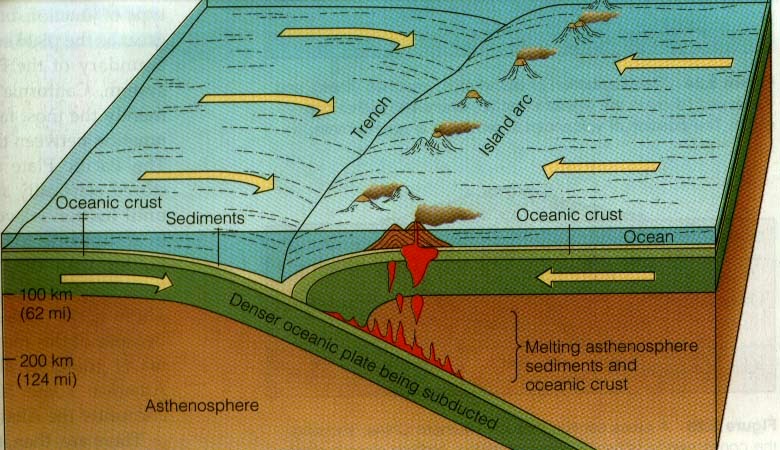Unique Physical
Geography of Grenada
Grenada is a volcanic
island, part of the Lesser Antilles island arc in the Caribbean. It is located
along the Lesser Antilles subduction zone where the oceanic crust of the South
American plate is being subducted under the Caribbean plate. The tectonic
activity is responsible for the formation of the island and its volcanoes. The
two most important volcanoes are Mt. Saint Catherine and Mt Kick 'em Jenny. Mt.
Saint Catherine is a currently dormant stratovolcano and the highest point of
the island. Mt Kick 'em Jenny is an active submarine volcano located about 8 km
north of Grenada. Grenada has a mixed topography of high mountains and low
valleys. These valleys contain rivers that flow out in a radial drainage
pattern.
 |
| Photo taken in December 2013 during my cruise to the Caribbean. In the image you can see some of Grenada's geographical features. |
10,000 years from now
10,000 years from now
Grenada will be quite different. Due to climate change, sea levels have been
rising about .13 in (3.2 mm) per year. Assuming that this continues, sea levels
will be 108.3 ft. (32 m) higher in 10,000 years. Grenada's highest
elevation is 840 ft., but otherwise varies from less than 300 ft. to 600 ft.
about sea level. Due to this some of Grenada will remain above land, but most
of its coastline will become submerged. Drowned river valleys or rias will
become characteristic of Grenada since the rising seas level will flood and
fill in the valleys located on the island.
 |
| Retrieved from http://www.teara.govt.nz/en/photograph/13012/a-drowning-landscape Image of a ria. Grenada may look more like this on a smaller scale in 10,000 years as sea levels rise. |
1,000,000 years from now
In 1,000,000 years
Grenada will change even more. All the Lesser Antilles including Grenada
started out as submarine volcanoes. More submarine volcanoes will form
around the area as the tectonic plates continue to move. Due to continued
volcanic activity Mt. Kick 'em Jenny will be uplifted and eventually become
connected to Grenada. The volcano has been known to erupt about every 10 years
which means that it will erupt about 100,000 times in the next million years if
it continues to be active. Each eruption forces the volcano more and more to
the surface expanding it. Kick 'em Jenny may become connected to the rest of
Grenada over time.
Due to the pattern of
glacial and interglacial periods, sea levels will fall again exposing this
formed land between Grenada and the currently submarine volcano.
 |
| Retrieved from http://en.wikipedia.org/wiki/Kick_%27em_Jenny Image showing depth of Mt. Kick 'em Jenny, 8 km of the coast of Grenada. |
100,000,000 years from
now
For the next 100 million
years the plates will continue moving resulting in continental drift. Even
relatively small land masses like Grenada will be affected. The rate of
subduction in the Lesser Antilles island arc is Caribbean is about 2 cm per
year. In 100 million years it will have been subducted 2,000 km. This along
with the movement of the other plates will eventually create another super
continent like Pangaea. Due to continental drift these super continents form
every few hundred million years and then break up again. In this next scenario
the Caribbean Sea will shrink as the plates move west setting the Islands on a
collision course with the main land. In this scenario Grenada will also move
closer to the continent as the Caribbean Sea closes and the Atlantic Ocean
expands.
 |
| Retrieved from http://earthdharma.org/2010/01/ Map of tectonic processes in the Lesser Antilles including tectonic plate boundaries, rates of movement and active volcanoes. |
Reference:
http://ocean.nationalgeographic.com/ocean/critical-issues-sea-level-rise/
http://en.m.wikipedia.org/wiki/Geography_of_Grenada
http://www.uwiseismic.com/general.aspx?id=27 Mount kick em jenny
http://www.renewton.plus.com/geology/talks/2012/Tale%20of%20two%20islands/index.htm
https://www.youtube.com/watch?v=uQ91AxUqHck
http://www.geo.mtu.edu/~raman/papers2/WadgeGeolVol.pdf

















